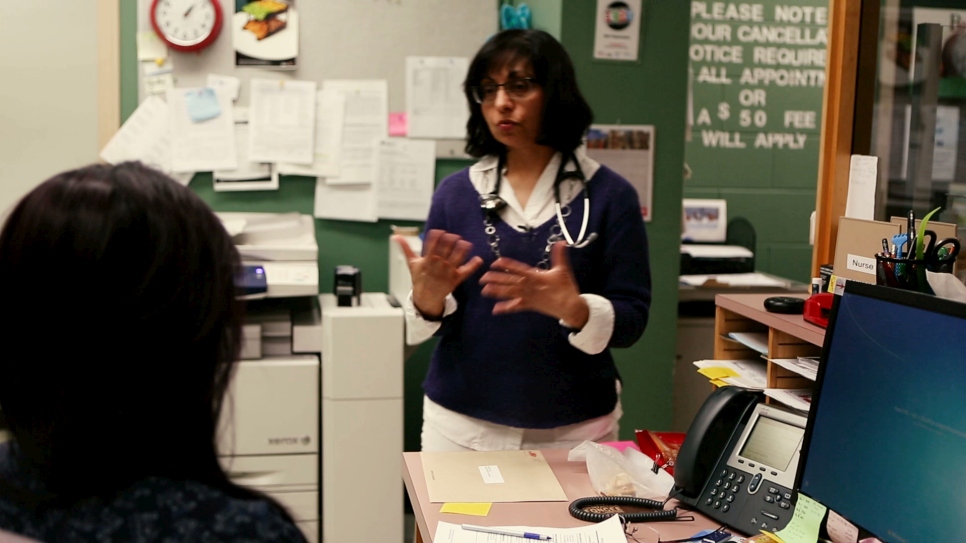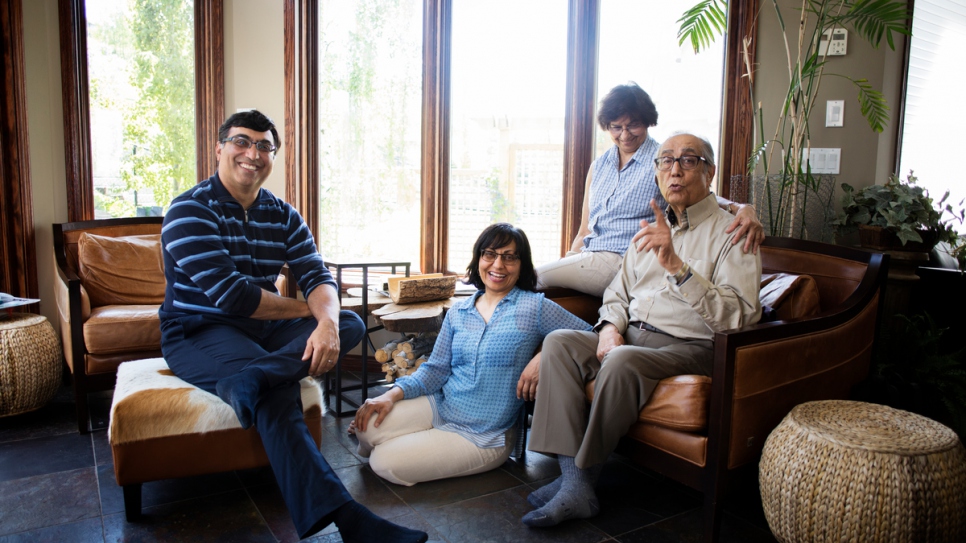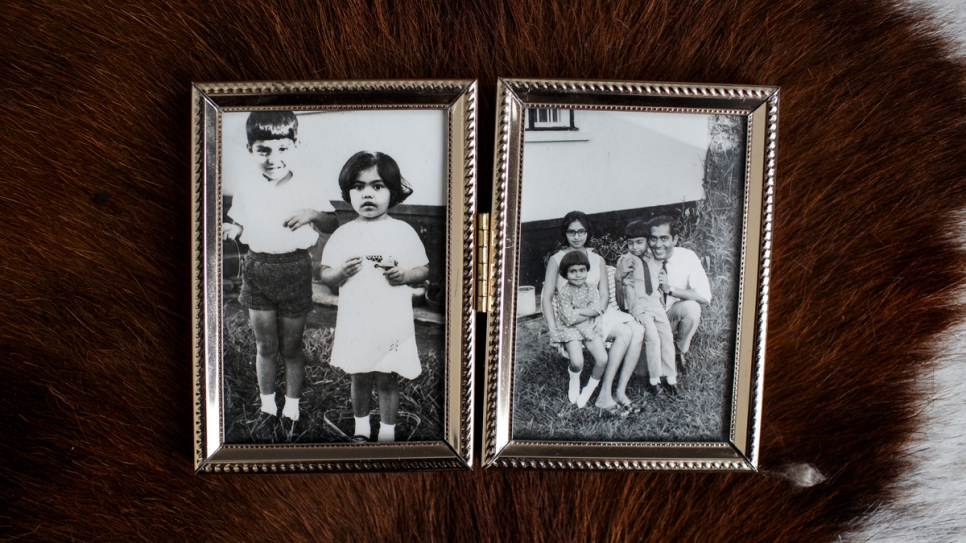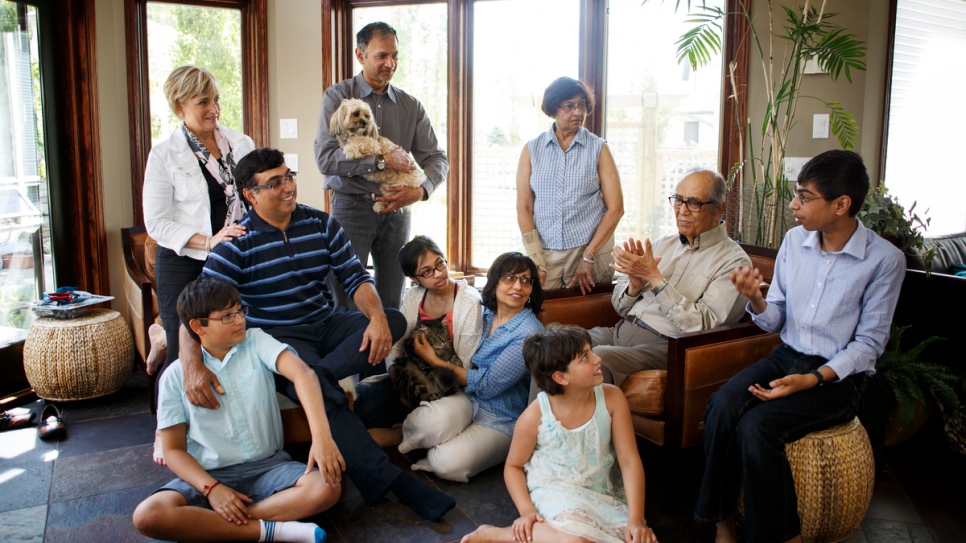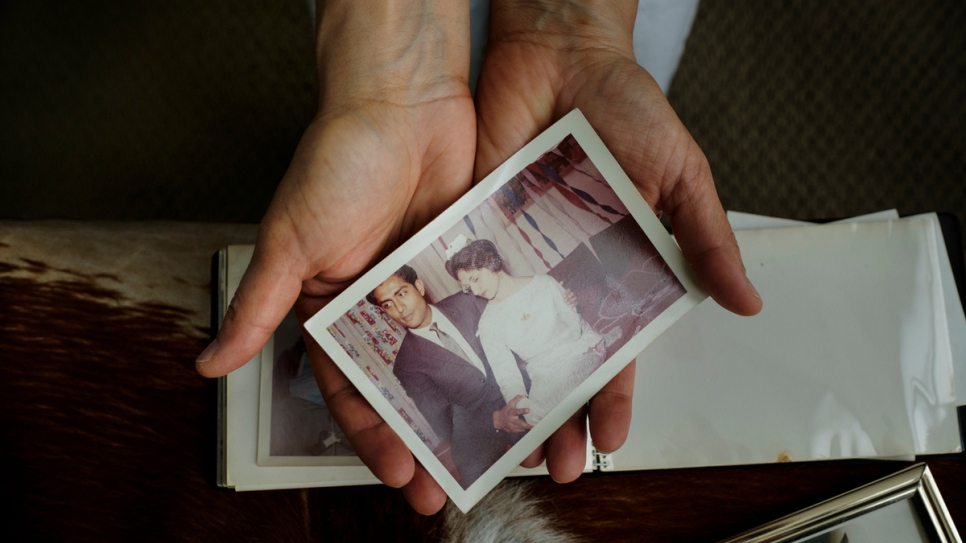Child refugee grows up to become family doctor in Canada
When Sameena and her Ugandan Asian family needed a place of safety, Canada stepped up. Now a doctor, she cares for families in her adoptive home.
Sameena Merchant at her family medical practice in Calgary.
© UNHCR/Annie Sakkab
As Sameena Merchant grew up in Uganda, her parents worked hard to shield their children from the rapidly deteriorating situation in the country. “I don't ever remember home not being a happy, positive place,” she says.
In 1972, under orders from then President Idi Amin, all Ugandans of Asian descent were required to leave the country within 90 days. Sameena’s parents were determined to ensure that she and her brother, Naeem, were able to live a carefree childhood.
Expelled from their home amid flaring tensions, the young family were among more than 7,000 Ugandan Asians who sought refuge – and a new life – in Canada.
With Air Canada planes sent to airlift refugees, they were on the first, well-publicized flight out of Uganda. It was Sameena’s first time on an aircraft and, after they landed in Montreal and were processed by Canadian officials, she remembers eating Indian food that had been prepared by their new hosts.
“I don't ever remember home not being a happy, positive place."
A government logbook records the arrival of father Mohamed Ali, mother Zarina, Naeem and Sameena. With them, they brought seven suitcases.
“It's funny what we packed,” says Sameena. “My mom didn't know what to pack, so she packed pots and cutlery. You don't know what you're going to need.”
In Uganda, both her parents had worked as teachers. But in Canada, those credentials were not recognized, so they took whatever jobs they could find. “That probably was tough for them,” she says.
She watched as, uprooted from their home and resettled to a foreign country and culture, her parents struggled to maintain the appearance of calm and order in their new home, masking the uncertainty that loomed over them.
One summer, she decided to set her sights on medical school. “I never felt that my desire to succeed and excel should be something I should hide,” she says. “This country gave me the opportunity to do whatever I wanted – all I had to do was make the commitment and do the work.”
Years later, having successfully obtained a medical degree, Sameena moved west to Calgary and met her future husband, Shamez. Like her, he had also fled Uganda as a child and found sanctuary in Canada. They bought their ‘forever home’ together, where they raised two children.
It was not long before the rest of the Merchant family followed and, today, her parents live up the street. Meanwhile, Naeem’s family is only a short drive away. Sameena’s house has become a meeting point where three generations converge for raucous weekend lunches.
While the personal life she has built has blossomed, so too has her professional life. Merchant’s family practice, spanning almost three decades, has had a lasting impact on the Calgary community, earning her a nomination of Calgary Family Physician of the Year.
“As a family physician, you're really a witness into people's lives,” says Sameena. “I feel really privileged that I have been able to make an impact.” There is a joy, she adds, in watching the patients you knew as children later become parents.
With a tenderness born of medicine and love, Sameena guides her father as he searches for his favourite chair in her house. Over the years, glaucoma has stolen his sight, making it difficult for him to continue his watercolour painting. Her mother heats up curries and corn in a peanut sauce – recipes dating back to their life in Uganda. Grandchildren race around them. “I think as a parent now, I realise actually how much they did,” she says.
Now, after all her parents did to shelter their children from fear, it is Sameena and her sibling who care for them, helping the parents enjoy the life – and home – they all built together.
“If someone were to ask me, who my heroes are, I would say my parents,” she concludes.
Then and Now is a series of stories profiling refugees who have come to Canada over the years, in search of safety, stability and a chance at a better life. Starting from 1956, when Canada accepted its first major intake of refugees, the project uses archived images and family photos to tell the stories of refugees from Hungary, Viet Nam, Uganda, Somalia, Colombia, Cambodia, Burundi and El Salvador.

